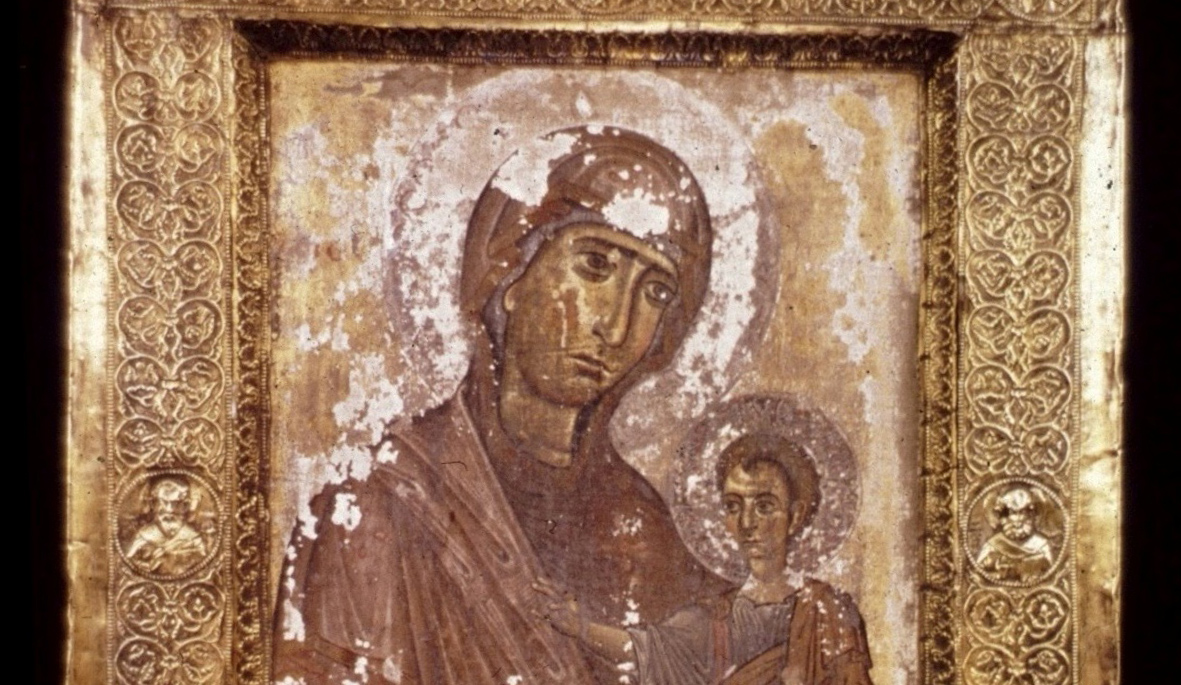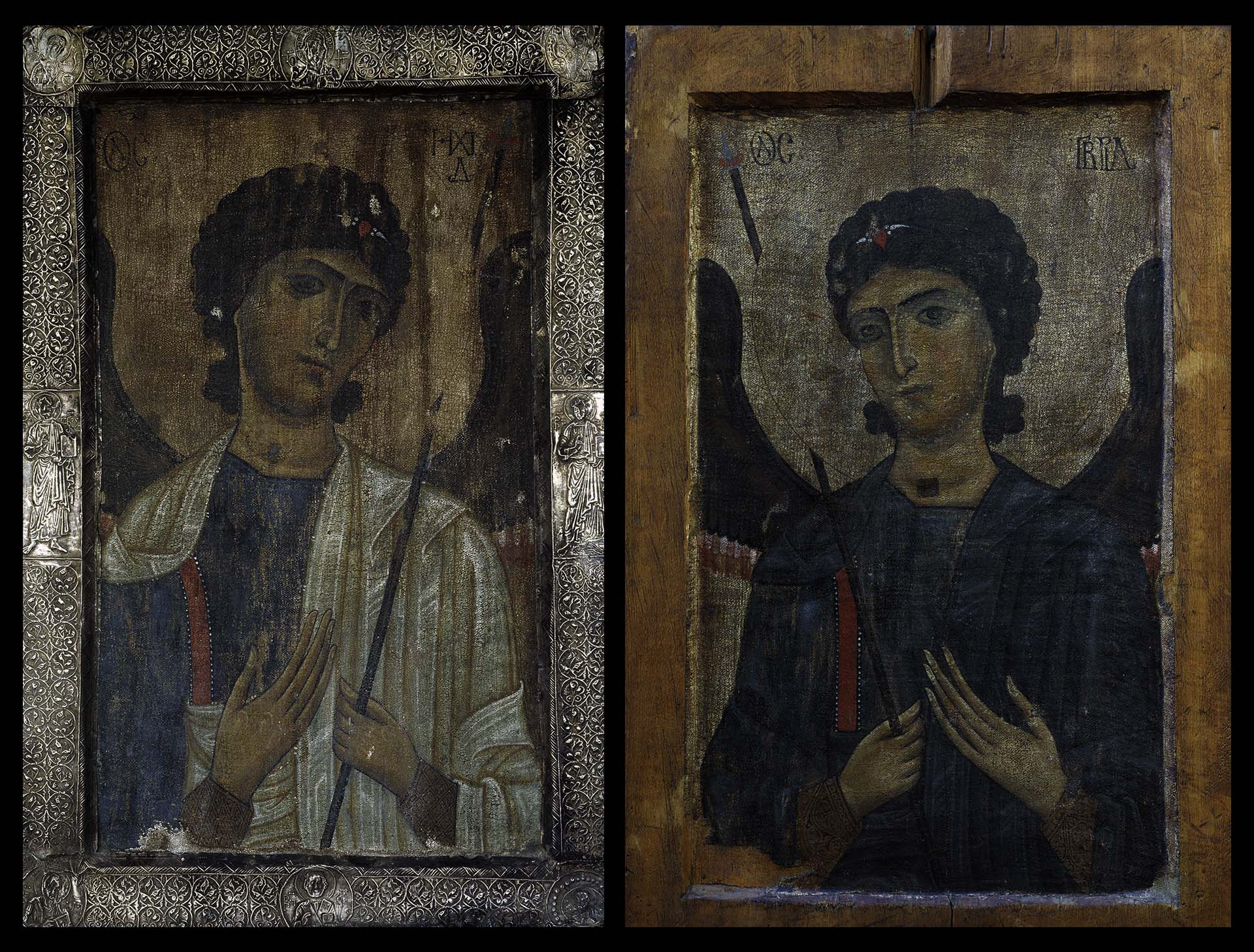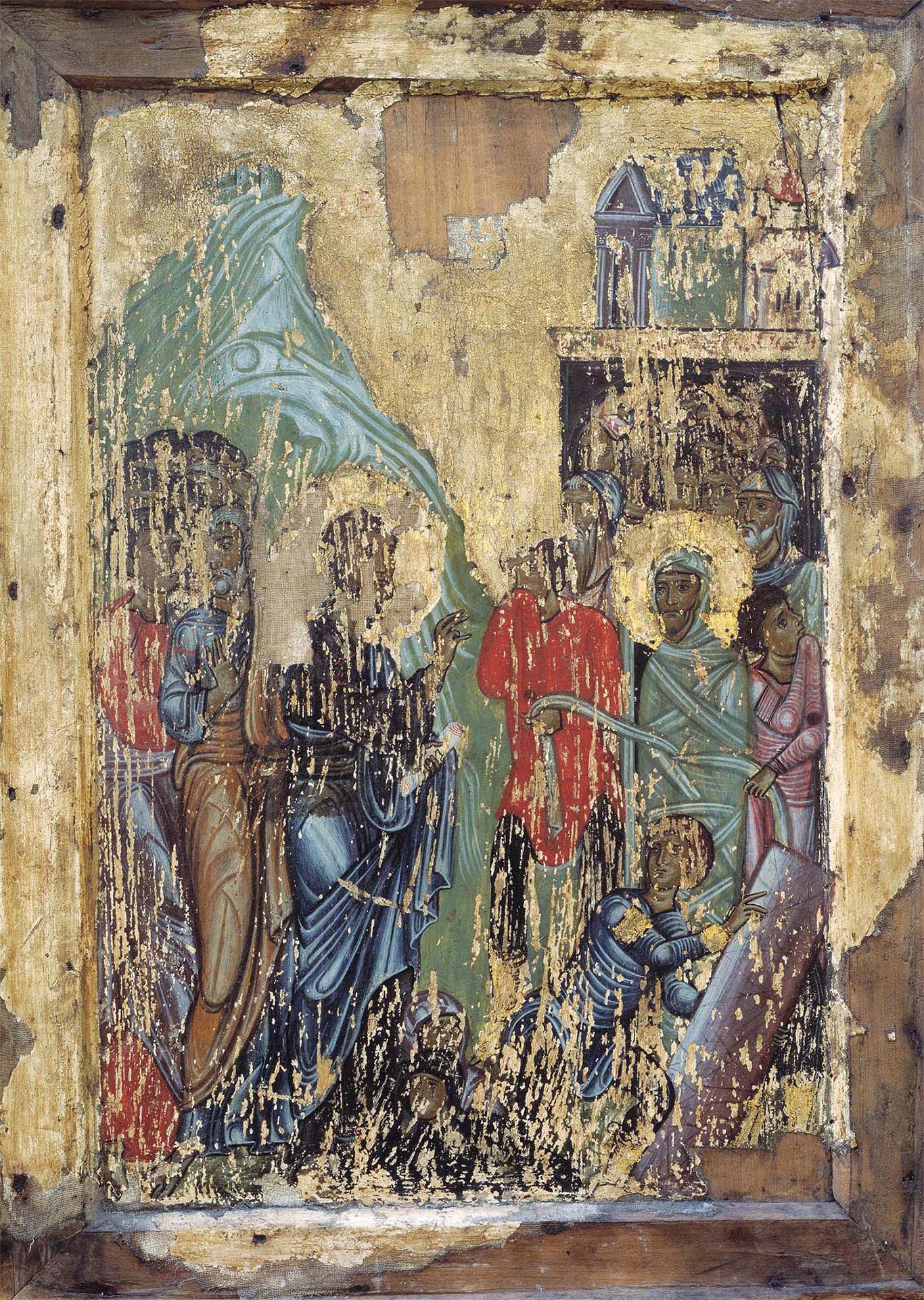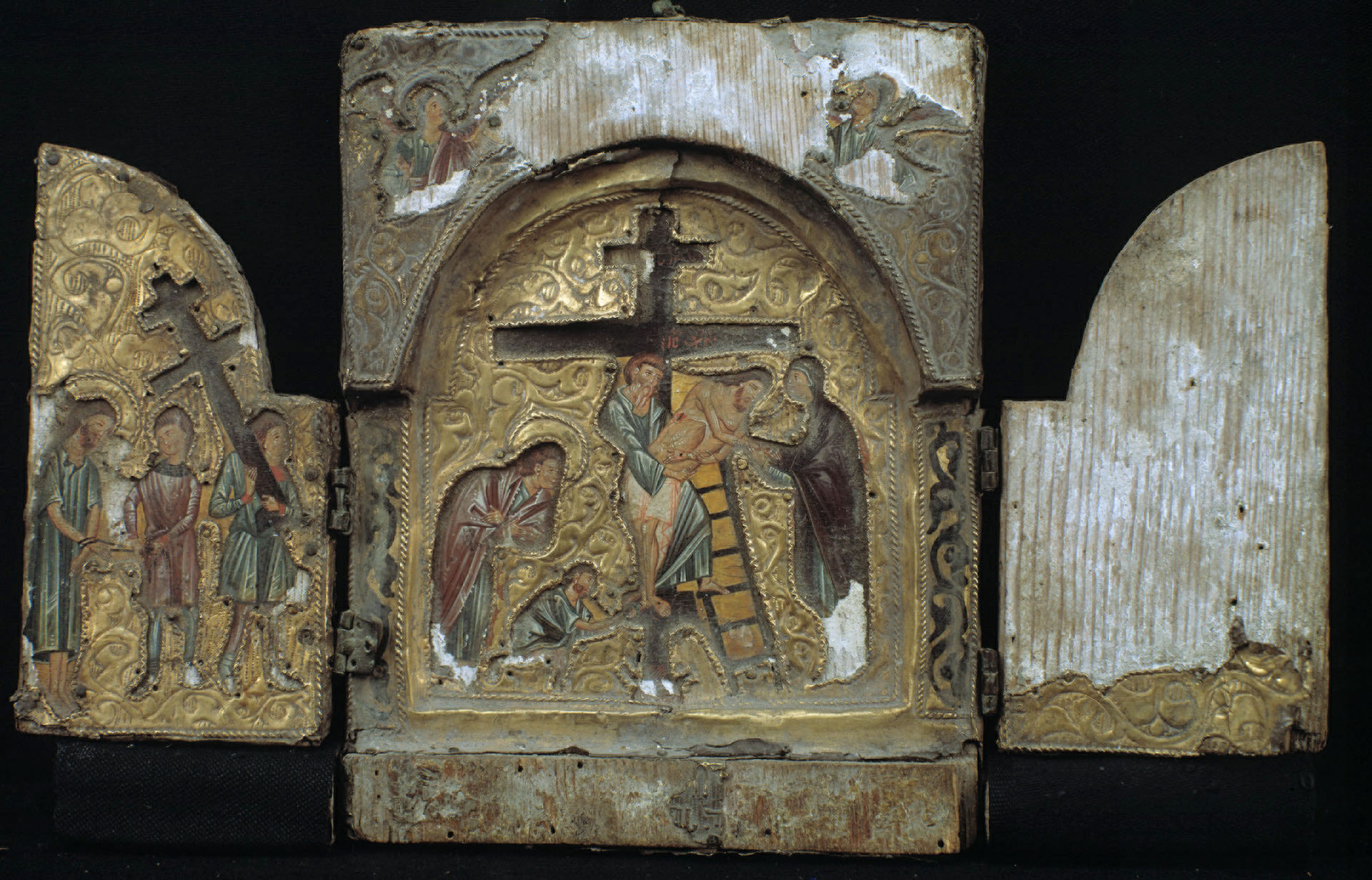
Feel free to add tags, names, dates or anything you are looking for


Georgian icon painting has a centuries long history. Although according to Georgian Church tradition the cult of icons in Georgia goes back to apostolic times, the earliest preserved painted icons are dated back to the late 10th – early 11th cc. At present several hundred painted devotional images are housed at the Georgian National Museum, Museum of Fine Arts, Kutaisi State Historical Museum, Museum of Svaneti and in the churches of Svaneti. Georgian painted icons are also preserved in former Georgian monasteries outside the country (e.g. The Monastery of Iviron at Mount Athos, Bachkovo Monastery in Bulgaria). St. Catherine's Monastery on Sinai possesses a significant collection of Georgian icons dating to the 11th -14th cc. The icons preserved in Georgia reflect the main cultural and spiritual developments of the country. Icons are closely interwoven with the lives of believers, since according to Christian teaching they are the way and means of communication with the heavenly realm. References to the creation and veneration of icons can be found in the medieval Georgian literary sources and documents.The medieval Georgian icons differ in form, function, iconography, artistic level, and provenance. They can be divided into the following categories: altar screen icons, processional icons, „portable altars“– triptychs, icon – reliquaries, ex-voto panels and small images for private devotion.
Medieval Georgian icons display various religious subjects. They depict diverse types of images of Christ and the Virgin, New Testament compositions and individual saints.

The Savior, late 12th- early 13th cc. Museum of Svaneti, Mestia
The special role of the Virgin in the devotional practice of Georgia is manifested in great variety of her iconographic types. The popularity of the cult of Military saints in the kingdom of Georgia resulted in the creation of their numerous icons. The Holy Women were also a popular subject for devotional images in medieval Georgia.

St. George, 13th c., Museum of Svaneti, Mestia
Some of the icons were created in advanced artistic centers, while others are the works of local workshops. The stylistic variety of devotional images indicates that in medieval Georgia numerous local icon-painting workshops were active.
Several Georgian painted icons have preserved portraits of their commissioners. They are depicted in supplicatory posture before their heavenly protectors. A number of painted icons have silver, or gilt silver, repousse revetments with donors’ inscriptions. As a sign of the special reverence, reverses of icons were often covered with costly textiles imported from Byzantium and Persia.
From the 12th century onward an increasing number of icons indicate their active involvement in religious life in both church services and private devotional practice. The political strength of the Kingdom of Georgia and its cultural achievements in the late 11th – early 13th cc. resulted in the creation of real masterpieces of religious art. The icons created in this period are distinguished by well-balanced compositions, harmoniously built figures, sophisticated colors and refined spirituality.

St. Nicholas, 13th c., Museum of Svaneti, Mestia
A pair of the icons representing the Archangels (one is in the Svaneti Museum, while the other is in the church of Lagourka, dedicated to Sts. Syricus and Julitta, Svaneti) and the Forty Martyrs of Sebastia are preserved from this period.

The Archangel Michael 11th – 12th cc.. Lagourka, Svaneti
The Archangel Gabriel, 11th – 12th cc., Museum of Svaneti, Mestia

Forty Martyrs of Sebastia, 11th – 12th cc., Museum of Svaneti, Mestia
Three icons depicting the Annunciation, the Raising of Lazarus and the Ascension belong to a set of the Twelve Great Feasts, presumably designed for the chancel screen.

The Rising of Lazarus, 12th c., Museum of Svaneti, Mestia
Three-part icons, triptychs, constitute a special group of icons. In majority of cases, they were created for venerable icons, inserted into the central panel. The painted True Cross reliquaries display compositions related to the relics kept there, i.e. the Crucifixion, or other compositions from the Passion cycle.

The Triptych with Descent from the Cross, 14th c., Ushguli, Svaneti
Particularly numerous are icons dating back to the 13th -14th cc. Among them are icons executed in the so called Palaelogan style (named after the Byzantine Imperial dynasty), which was widely disseminated in the Orthodox Christian world from the 14th century. (N9-9b, 10) At the same time, from this epoch, we have a large number of icons executed according to the traditional artistic language of previous centuries.

The Archangel, 14th c., Church of the Archangels, Pkhotreri,
Christ, 14th c., Church of the Archangels, Pkhotreri,
Apostle Paul, 14th c., Church of the Archangels, Pkhotreri
In the 15th - 16th cc. the art of icon painting, like other branches of art, declined in quality. From this period onwards we can only find icons of mediocre professional level, which have merely historical rather than artistic significance.